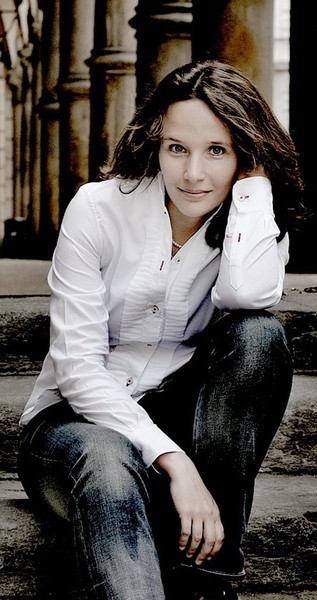A mixed night of Beethoven and Ravel from Bringuier, DSO

Hélène Grimaud performed Beethoven’s Piano Concerto No. 4 with the Dallas Symphony Orchestra Thursday night.
Thursday night’s concert of the Dallas Symphony Orchestra at Meyerson Symphony Center opened promisingly; pianist Hélène Grimaud and guest conductor Lionel Bringuier (the latter making his Dallas debut) found exquisite poetry in the opening moments of Beethoven’s Piano Concerto No. 4.
What followed, however, was a decidedly mixed rendition of a work that remains, two centuries after its premiere, unique in its melding of emotion and classical structure. Beethoven here created an intimate link involving composer, performer, and listener, and Grimaud joined Bringuier and the orchestra to communicate the joyful serenity of the opening pages. But as the textures thickened, the connection between orchestra and soloist became less precise. Still, Grimaud created an effect that was both arresting and ultimately majestic in the first-movement cadenza.
To their credit, in the striking conversation of piano and orchestra in the second movement, Bringuier and Grimaud opted for a high-contrast approach to produce intense drama; Bringuier brought out a gruff heaviness in the orchestral part, emphasizing the lower registers, while Grimaud answered with an almost pleading quality in the piano’s responses. The ensuing vivace finale was, like the first movement, not entirely perfect technically between orchestra and soloist; yet the final moment arrived thrillingly, with admirably attentive shaping and phrasing from Grimaud along the way.
After intermission, Bringuier and the orchestra moved on to a group of Ravel’s flashier essays for orchestra. The strategy of pairing Beethoven with Ravel was both intriguing and puzzling; Ravel is at the top of the list of composers on whom Beethoven seems to have had almost no influence, and contrast of opposites was apparently the guiding force in the selection.
Lionel Bringuier
Ravel’s interest in the waltz provided the theme of the initial Ravel works, with Bringuier opting to combine Ravel’s two big waltz pieces into a unified segment, segueing from Valses nobles et sentimentales to La Valse. Bringuier manhandled the first of the eight short movements that make up Valses nobles et sentimentales with heavy, relentless accents, but managed to find some subtlety and respite in the ensuing movements. Ravel viewed the waltz as a container for all sorts of emotions, frequently turning toward darkness and decadence; Bringuier reveled in the noise, and frequently allowed the brass and percussion to overwhelm the strings.
After a nicely ominous opening for La Valse, Bringuier seemed uncertain how to convincingly link the varied episodes together; as in the Valses, he apparently took the entry of brass and percussion as a signal to acoustically obliterate the string section.
Exactly how the close pairing of Valses nobles et sentimentales with La Valse enhances the either work remains a mystery; Ravel’s symphonic output is rich with masterpieces that might have provided a broader view of Ravel, and even some linkage to the Beethoven.
The evening ended with Ravel’s Bolero. One has to admit admiration for the craftsmanship and gall of a composer who can, starting with a remarkably banal tune, create a set of variations based solely on variety of timbre—and come up with one of the most popular works of music composed in the 20th century. The orchestra comported itself magnificently (with impressive command of the essential pianissimo passages); Bringuier allowed the relentless momentum to accumulate as intended, and, predictably, the audience roared its approval.
The program will be repeated at 7:30 p.m. Friday and Saturday and at 2:30 p.m. Sunday at Meyerson Symphony Center. mydso.com; 214-692-0203.